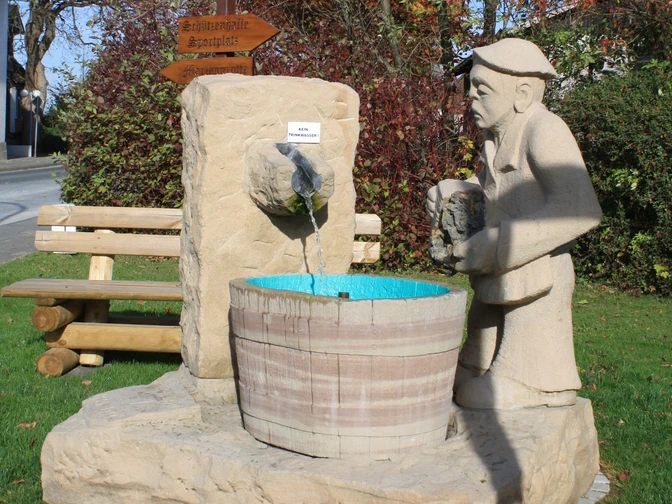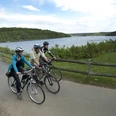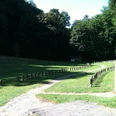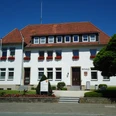- Photos & Map
How would you like to arrive?
- Description
- Good to know
- Nearby
Download GPX file
- 2:30 h
- 21.24 km
- 373 m
- 372 m
- 257 m
- 456 m
- 199 m
- Start: KuGA, Im Aatal 1, Bad Wünnenberg
- Destination: KuGA, Im Aatal 1, Bad Wünnenberg
There are a number of well-signposted cycle routes around Bad Wünnenberg. The circular routes marked WÜ 1 - 8 are between 9 km and 25.1 km long. They lead partly through meadows and fields but also through forests around Bad Wünnenberg, are largely asphalted and therefore easy to cycle on.
The WÜ 5 cycle route is 21.3 km long and is a medium-difficulty circular route. A short section leads along the B 480 main road, which is why this route is only suitable for children to a limited extent. Parts of the trail are not asphalted, but are paved forest and field paths. A very short section is just a narrow grass path. The route is very varied and pleasant to ride. Longer climbs near the village of Bleiwäsche require some fitness and a multi-speed bike. Cycling clockwise, you start your ride through the Aatal nature experience and then cycle along the Aabachtalsperre dam for a while. The Aabachtalsperre was put into operation in 1983. It has a capacity of 20 million cubic meters of water and supplies 250,000 people with drinking water every day. Let your gaze wander over the water and enjoy the magnificent view. The route continues through the forest to Bleiwäsche and from there through the beautiful Lühlingsbach - Nettetal nature reserve. Then comes the section on the B 480, where you unfortunately have to share the road with the rest of the traffic (watch out!). The route then takes you back into another nature reserve, the Leiberger Wald, where after a while you come to the plague cemetery, which invites you to take a break and a trip into history. The route continues to Bad Wünnenberg and back to the starting point. In Bad Wünnenberg, you can then visit the Aatal nature experience to take advantage of the wide range of offers, such as the adventure barefoot trail and the extensive wildlife enclosure.
Good to know
Best to visit
Directions
Tour information
Loop Road
Stop at an Inn
Equipment
Directions & Parking facilities
A44 Dortmund-Kassel, junction Bad Wünnenberg-Haaren, then continue on the B480 towards Bad Wünnenberg. In the town, turn left at the traffic lights into Mittelstraße. Then take the second entrance on the right into "Im Aatal"
.A33 Bielefeld/Brilon, exit at the Bad Wünnenberg-Haaren junction, then continue on the B480 towards Bad Wünnenberg. In the town, turn left at the traffic lights into Mittelstraße. Then take the second entrance on the right into "Im Aatal".
Take the train to Paderborn main station; from there continue by bus in the direction of Bad Wünnenberg, bus route R11 stop Kurhaus or express bus R10 (until 06.07.21: S10) stop Schäferstraße
.For more information on traveling by bus, please visit www.fahr-mit.de or call 05251/2930400
Additional information
Further information and GPS devices are available from Bad Wünnenberg Touristik GmbH at:
Author
Kneippheilbad Bad Wünnenberg
Organization
Bad Wünnenberg Touristik GmbH
License (master data)
Author´s Tip / Recommendation of the author
Safety guidelines
Nearby





